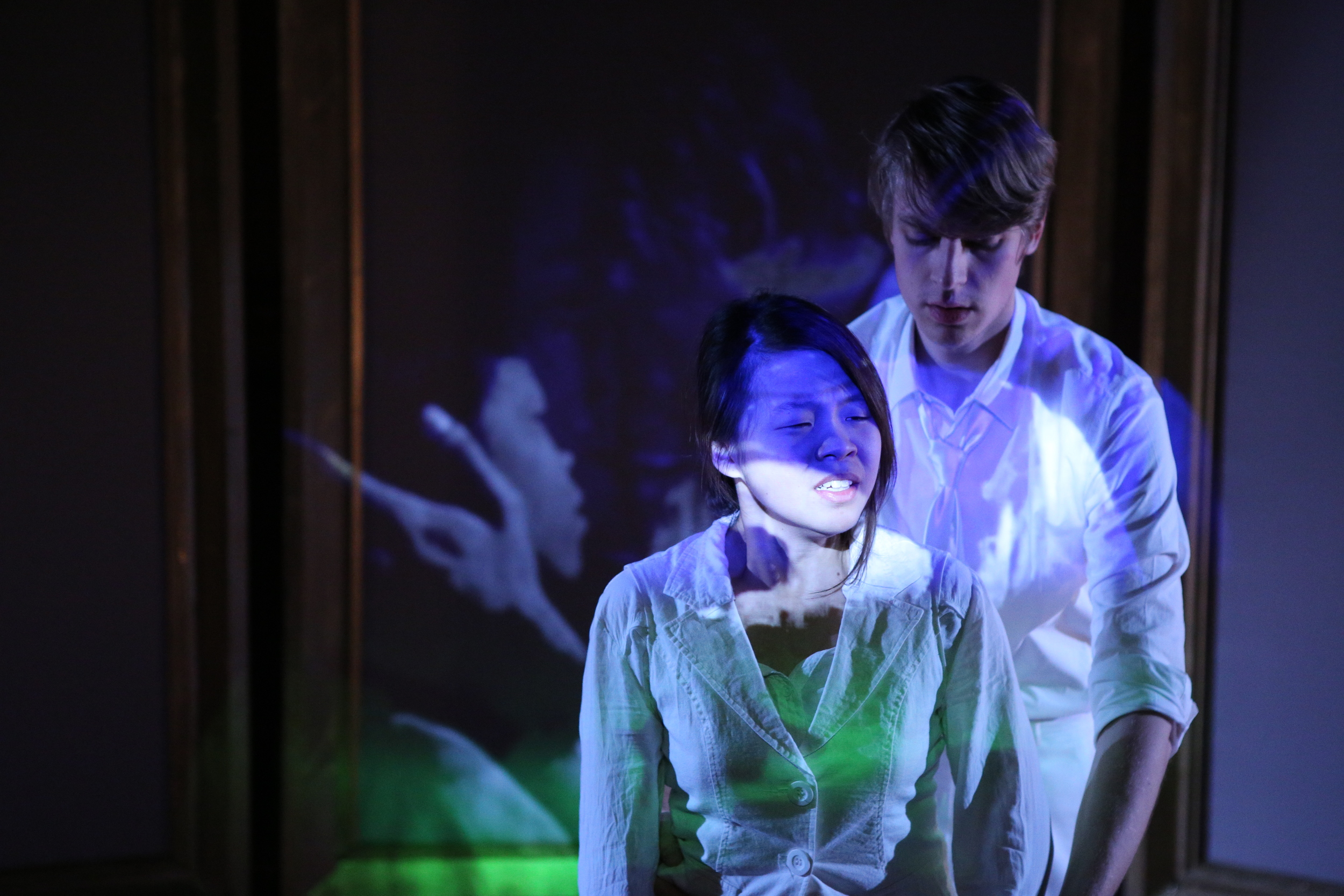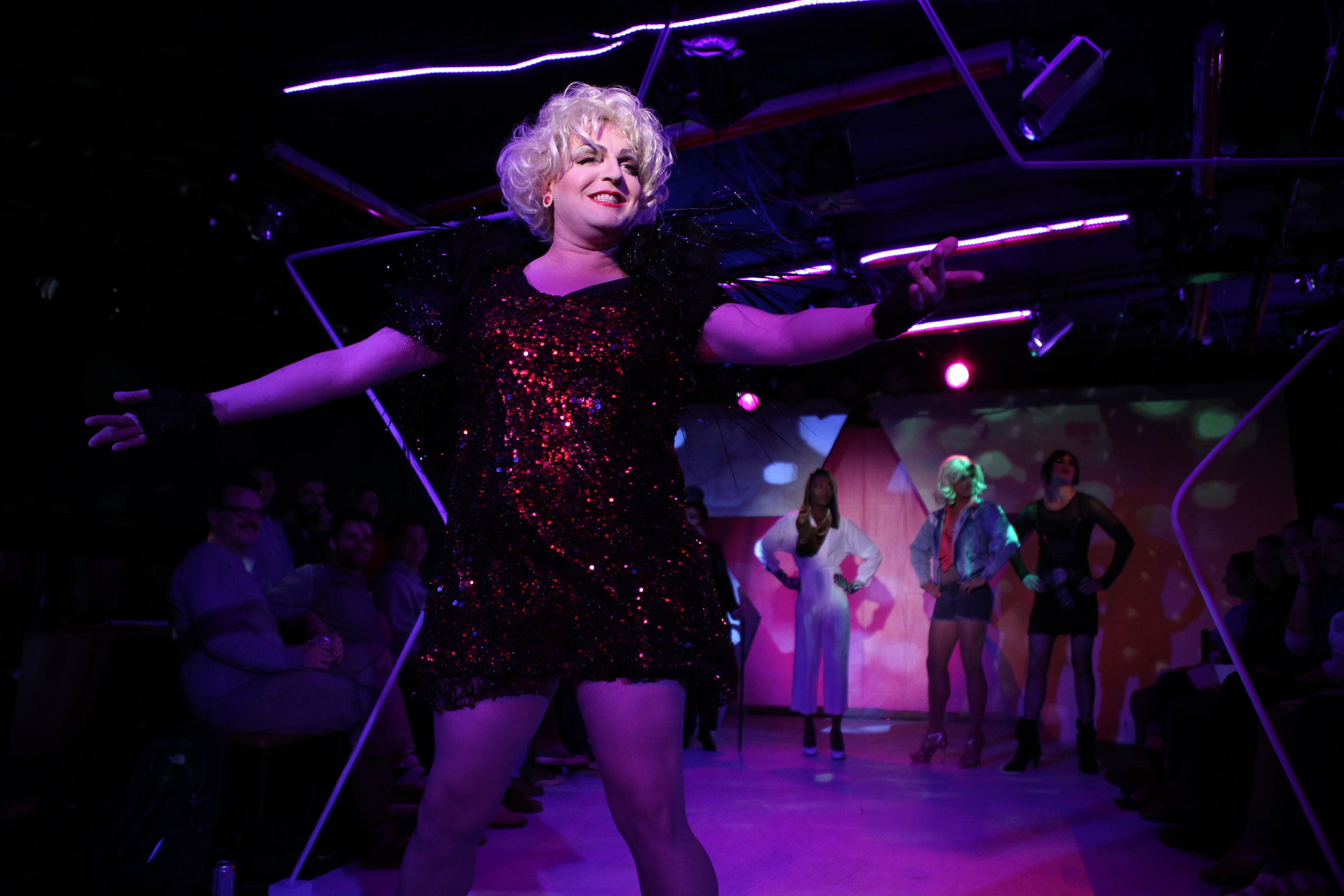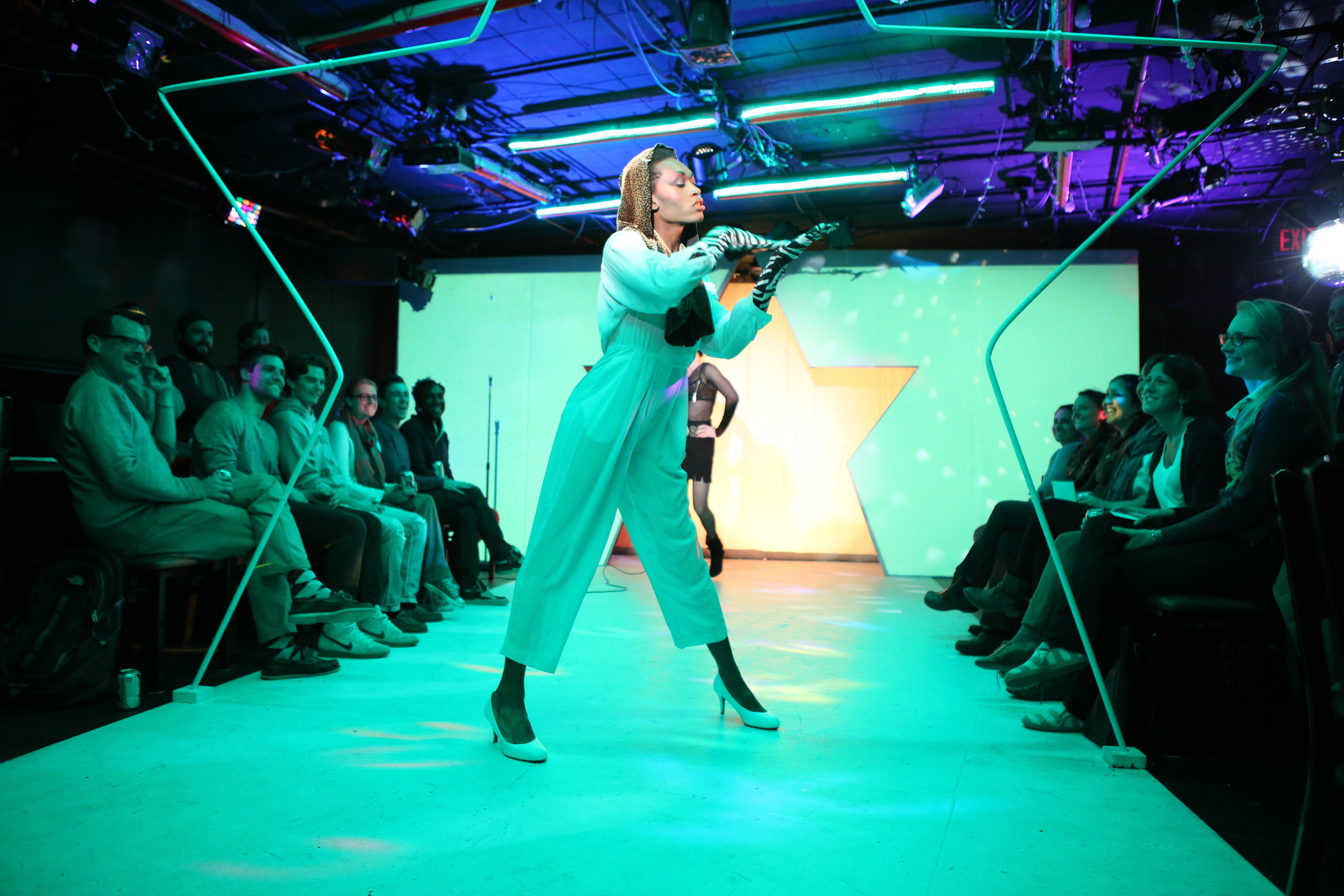“’Tis better to have loved and lost / Than never to have loved at all,” Tennyson said. A nice retrospective reflection, but what about when you’re in the midst of the “losing” part? Bound to Burn, a dance-theater piece at Yale Cabaret, by Rob Chikar and Alyssa Simmons, is an expressive enactment of that part. The show features three couples—Valerie (Elizabeth Mak), the breadwinner, and Tim (David Clauson), her husband; Jessica (Chasten Harmon), a free spirit, and Mark (Daniel Reece), her heart; Ryan (Steven Rotramel), a prostitute, and Braden (Rob Chikar), his hope—who all end badly, couple-wise. The dance routines take us through each couple’s journey—from hopeful coupling to longing separations to suicidal despair—in very lyrical movements that are greatly enhanced by lighting and projections.

Kristen Ferguson’s projections—on three large panels or screens—interact in very evocative ways with the movements, choreographed by Chikar and Simmons, while a variety of all-white costumes by Steven Rotramel also do a lot for visual interest. There are projections of texts, of large close-ups of the dancers, sometimes static, portrait-like, sometimes in motion (I particularly liked the hair movement in a close-up of Mak perfectly synched with the song); there are shadow figures of the dancers, and dancers in front of the panels interacting with dancers behind the panels. The dances, in couples and as solo figures, manage to trace a progress through each number, so that we are following both movement and narrative. Very well thought-out.
The show’s tech is excellent, and all six dancers are expressive as actors as well—especially Harmon and Reece (the couple I thought was going to “work”) as Harmon’s expression of loss is very moving. As Valerie, moving on from her marriage, Mak executes a few balletic moves that add greatly to the sense of release that can come when something’s really “over.” The story between Ryan and Braden, involving the offer of a wedding ring, savvily put the age-old trope of the rejected marriage proposal into the context of gay prostitution, reminding us that the downer of unworkable relations is indifferent to gender. As R.E.M. might say, “everybody hurts.”
And apropos of that musical reference, I have to say that the choice of music for the show surprised me a bit. I found myself thinking about how “mainstream” the music made the show feel, to me. Which is a way of saying that the Cab, here, seems to be exploring the possibilities of a show able to speak to formulas of romance and sentiment found in contemporary popular music—for a wide audience. The music, by the likes of Damien Rice, Jason Walker, Plumb, and SafetySuit, is varied enough to allow for different moods, but mainly conveyed yearnings and chagrin with the restrained gush of emo sensibility. I started (almost) hoping for an ABBA song.
Which led me to this reflection: if the music in Bound to Burn expresses your sense of the possibilities of romance, change the soundtrack!
Bound to Burn Conceived by Rob Chikar, directed with Alyssa Simmons
Choreographers: Rob Chikar, Alyssa Simmons; Producer: Melissa Zimmerman; Scenic Designer: Brian Dudkiewicz; Costume Designer: Steven Rotramel; Lighting Designer: Andrew Griffin; Sound Designer: Rob Chikar; Sound Engineer: Steven Brush; Projection Designer: Kristen Ferguson; Technical Director: Keny Thomason; Stage Manager: Melissa Zimmerman; Photographs by Nick Thigpen
Yale Cabaret December 5-7, 2013





